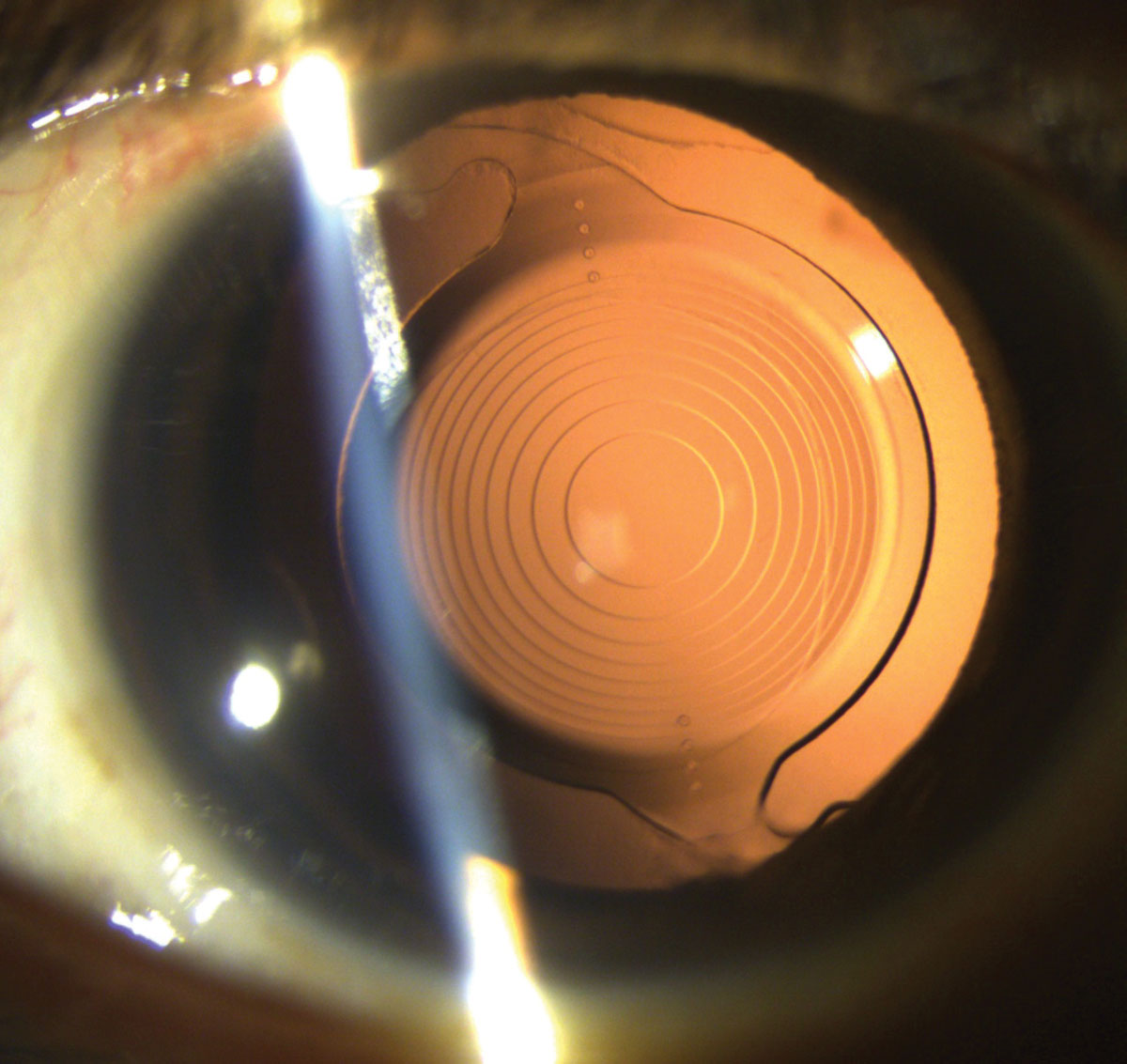Editor’s Note: As part of our “Year in Review” retrospective, we’ve selected the top 30 news stories of the year and are re-sharing them as we close out 2022. Follow along as we count down to number 1!
This study was originally published on November 23, 2022.
 |
|
In affected patients, the induced axis change could complicate toric IOL calculations and outcomes. Photo: Victoria Roan, OD. Click image to enlarge. |
With the rise of the COVID-19 pandemic came unforeseen ocular consequences. Some reports have since been published discussing how mask wear can make an impact on ocular examination, including worse subjective dry eye symptoms, intraocular pressure measurement errors, visual field testing disturbance and choroidal thickness increase with KN95 mask prolonged usage.
With much more to learn about a mask’s effects on eyes, one new study wanted to assess if mask-wear affected corneal topography and tomography readings. For the cornea service at Bascom Palmer Eye Institute, the thought occurred after observing multiple patients having trouble with getting corneal surface mapping measurements with mask-wear, as the device interface was giving “error readings.” With mask readjustment or removal, the issue resolved.
The prospective study included 52 eyes total. Imaging was performed without a mask. The same imaging was then repeated wearing different kinds of masks, including a Halyard Level 2, Halyard Level 3 and KN95. The measurements taken were compared by wearing vs. not wearing a mask, and clinically significant changes were recorded for axis of astigmatism, magnitude of astigmatism and mean keratometry value.
While mask wear did not result in difference of topography and tomography measurements, 53% of participants displayed a greater than 10 degree change in axis of astigmatism for topography measurements and 41% displayed a greater than 15 degree change, both while wearing a mask.
These findings were less prevalent in tomography, with only 19% displaying greater than 10 degree change and 13% displaying greater than 15 degree change. However, the tomography changes were more likely to happen in the against the rule astigmatism group.
Even more, about a third of participants showed greater than 0.5D change in the K reading on tomography. Generally, topography was sensitive to mask-wear inducing changes of axis of astigmatism, while tomography was sensitive to magnitude of astigmatism.
Based on these findings, the researchers elucidate that “mask wear changed the axis of astigmatism by an amount (>10° and >15°) which could impact toric IOL axis placement, overall toric IOL effect and refractive surgery targets.” Because of this possibility, the researchers warn that errors in measurement like the ones observed here could result in suboptimal astigmatic correction and unsatisfactory visual outcomes.
The authors attribute a few varying factors that may explain why mask-wear is impacting corneal shape. Greater mask rigidity, especially ones with metal wire over the nasal bridge, could add compressive force on the lower lid and result in a greater effect on corneal shape. Conversely, masks with looser fits could contribute to tear abnormality through escaped air in the space between the mask borders hitting the ocular surface.
With all this in mind, the authors advise, in a paper for Journal of Cataract & Refractive Surgery, that “axis determination should be interpreted with caution with respect to refractive surgery and/or toric intraocular lens planning in individuals whose measurements were obtained while wearing a mask.” Further research is needed to determine if long duration of mask wear further related to corneal shape.
Zein M, Wylegala A, Sripawadkul W, et al. Corneal topography and tomography readings with mask-wear. J Cat & Ref Surg. 2022. [Epub ahead of print]. |

